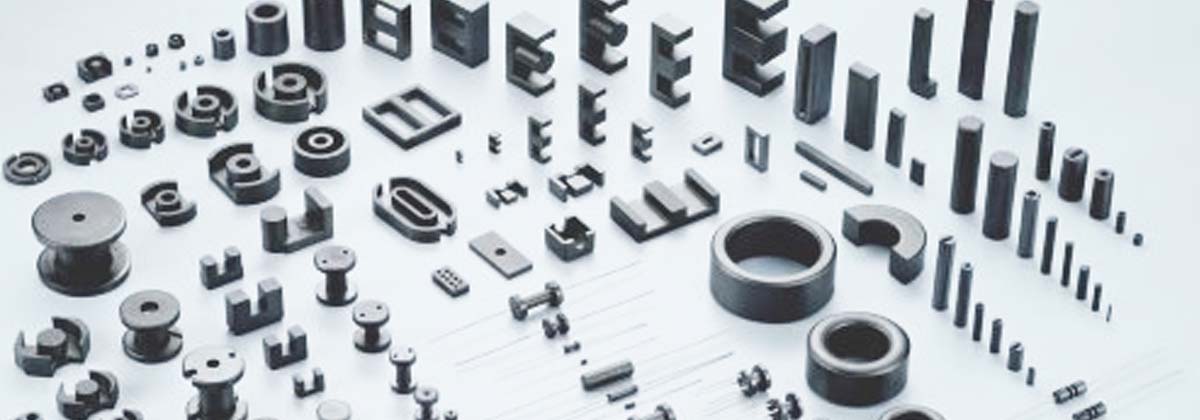Ferrite Beads
A ferrite bead is a simple hollow cylinder or bead that is made of ferrite material

A ferrite bead is a simple hollow cylinder or bead that is made of ferrite material
Ferrite is a black semi-magnetic crystalline structure that gives steel and cast iron their magnetic properties and it is a passive electric component that is used to filter and suppress the amount of high frequency electromagnetic interference (EMI) found in electronic circuits. Cylindrical in shape a ferrite bead consists of a mixture of iron oxide and other metals such as manganese, zinc, copper and nickel in various combinations. The material is formed into a hollow cylindrical core and cooked. The resulting core material is easily magnetized and demagnetized and is called a soft ferrite, however, ferrite material is mechanically rigid and brittle and can chip and break if mishandled, so they are encased in rubber or plastic material to protect them and keep the ferrite bead in place.
Also known as blocks, cores, rings, EMI filters, or chokes there are several different kinds of ferrite beads categorized by maximum DC resistance, case size / dimension, rated current, impedance, operating temperature range and packaging type, but the most common sizes for impedance are 120 Ω, 220 Ω, 600 Ω and 1kΩ.
Many ferrites are electrically non-conductive. In these types of ferrites eddy currents do not flow through the material which makes them suitable for use on radio frequencies in transformers, inductors, baluns and loopstick antennas.
A ferrite core or bead can be used in two separate ways to improve its ability to block unwanted electromagnetic interference.
In one instance, the ferrite concentrates the magnetic field which increases inductance and therefore reactance. This impedes or ‘filters out’ the noise. In the other instance, the ferrite can produce an additional loss in the form of resistance within the ferrite itself. The ferrite creates an inductor with a very low Q factor. This loss does create some heat within the ferrite, but it is negligible. When the electromagnetic levels are high enough to cause interference, or undesirable effects in sensitive circuits, the energy blocked is typically quite small.
Large ferrite beads are usually found on external cabling but various smaller ferrite beads are used internally in circuits. They are fixed onto conductors or around the pins of small circuit-board components, such as transistors, connectors and integrated circuits. Ferrite beads can be used for the removal of power line noises in cellular phones, PCs, TV tuners, audio players, DVDs, game machines, digital photo frames and several other electronic circuits.
Manufactured to international and UK safety standards, Am Transformers consider their ferrite bead production a speciality, so contact them today to discuss your requirements.